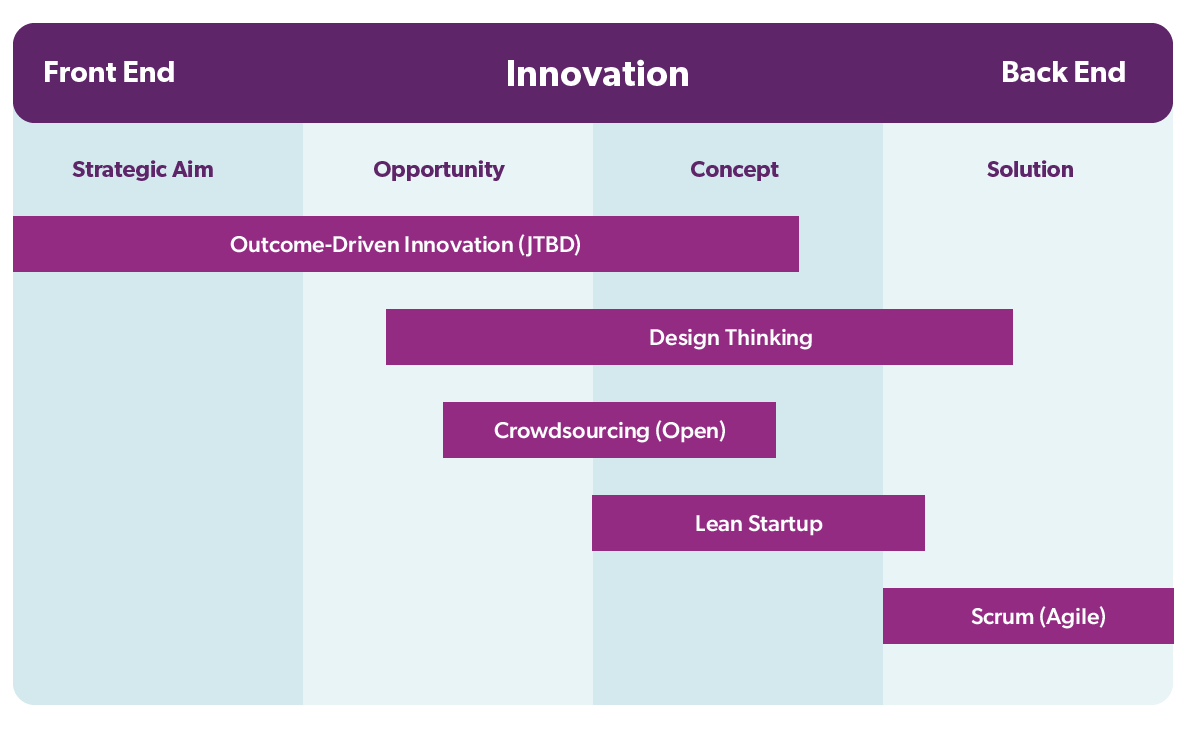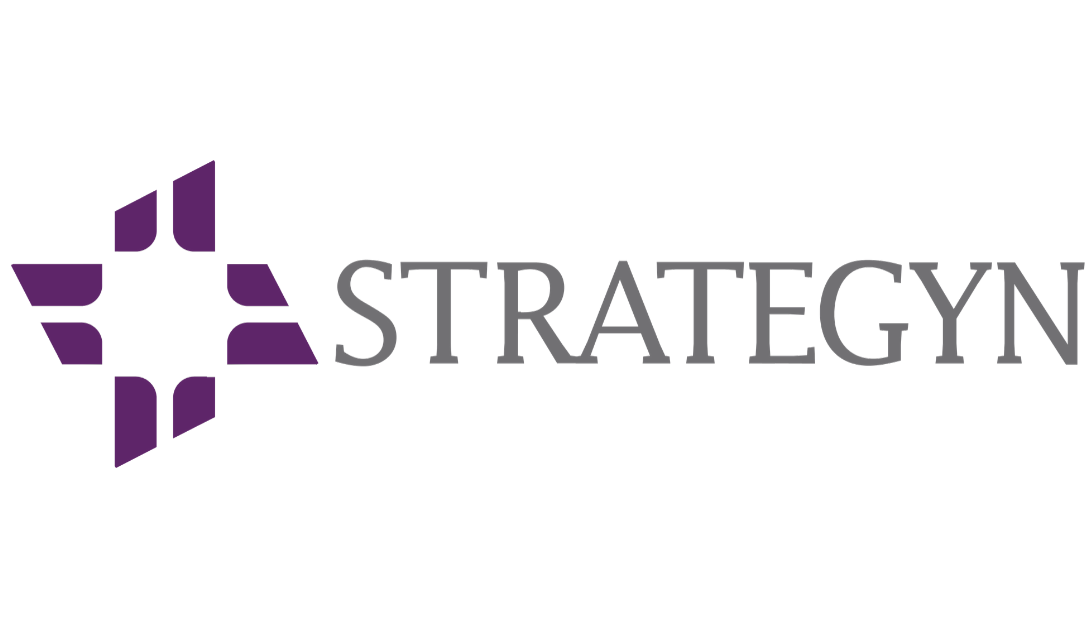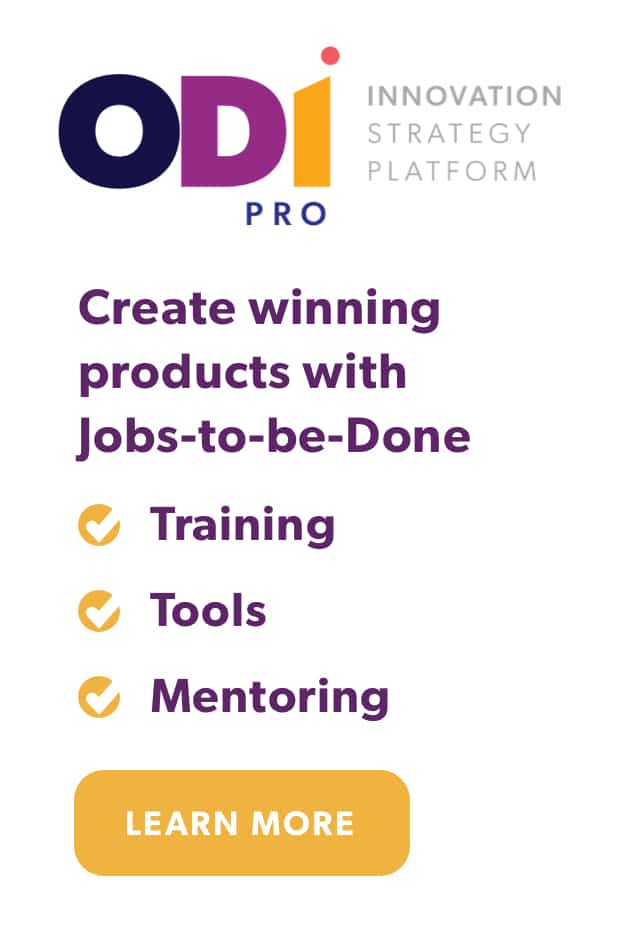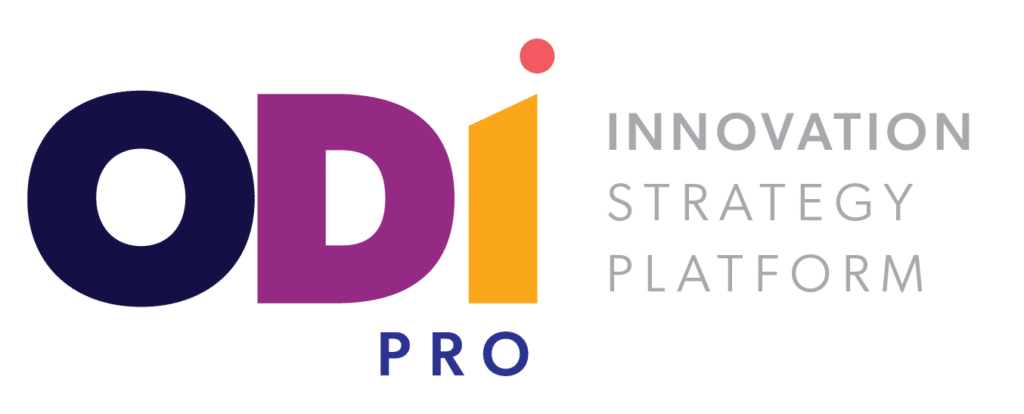Innovation is pervasive in organizations big and small. Not only is it critical to growth and competitiveness, it’s a requirement in order to prevent stagnation and decline.
Yet innovation is also quite elusive for organizations. Average performing organizations are seeing limited success with their innovation efforts.
One of the primary reasons for this is also an opportunity. Organizations employ suboptimal discipline to their innovation process. Organizations that fail to leverage effective innovation methods also fail to see success more often than not.
But with many innovation methodologies available, from design thinking and lean startup to jobs-to-be-done and open innovation, determining which approaches are most appropriate for a given organization can be a challenge.
Compounding this challenge is the fact that not all innovation ‘methodologies’ are actually methods. Understanding the distinctions between theory, methodology, and practice is foundational to building an effective innovation process for your organization.
This comprehensive guide aims to demystify the complex world of innovation methods and equip you with the knowledge and tools to navigate it confidently.
You will develop a deep understanding of the key principles, strengths, and limitations of various innovation approaches. This will enable you to decide which methods to employ in your innovation process. Additionally, you will learn how to effectively integrate multiple innovation methods, leveraging their complementary nature to drive more robust and impactful outcomes.
Theory vs. Method vs Practice
Before exploring several prevalent innovation methods, it’s essential to untangle some key terms that are often conflated, leading to confusion.
Firstly, a theory is an explanation of phenomena, often delineating causal relationships. For instance, Jobs-to-be-Done Theory posits that people purchase products and services to fulfill specific tasks or objectives.
Secondly, a methodology refers to a systematic approach to achieving a goal. It typically entails a deliberate sequence of steps, along with specific practices and tools utilized to achieve the desired outcome. Design Thinking, for instance, is commonly regarded as a methodology, characterized by its structured framework of five key steps (empathize, define, ideate, prototype, test), each supported by its unique set of practices and tools.
Lastly, a practice denotes a particular technique employed to execute a step within a broader process. For example, conducting qualitative customer interviews to capture customer needs is a practice that aligns with a broader methodology.
Understanding these distinctions is pivotal when assessing which approach(es) to leverage and considering the potential for integrating multiple innovation methodologies.

Understanding Various Innovation approaches
Armed with a clearer understanding of theories, methods, and practices, let’s now examine some of the most widely recognized innovation approaches:
- Design Thinking is a human-centered methodology that focuses on empathizing with customers, defining problems, ideating solutions, prototyping, and testing. It places the user at the heart of the innovation process, emphasizing understanding customers and generating creative solutions.
- Lean Startup is a methodology that emphasizes rapid experimentation and iterative learning. It encourages companies to develop minimum viable products (MVPs), test hypotheses, and pivot based on customer feedback.
- Agile is an approach that prioritizes flexibility, collaboration, and continuous improvement. It employs principles of working in short cycles, delivering incremental value, and adapting to feedback as needed.
- Open Innovation is a theory that suggests that valuable ideas come from diverse perspectives, which often reside outside a given organization. It encourages teams to collaborate with external partners, such as customers, suppliers, and competitors, to bolster creativity and co-create solutions.
- Jobs-to-be-Done (JTBD) is a theory of innovation based on the idea that people buy products and services to get “jobs” done, i.e., to help them accomplish tasks, achieve goals and objectives, and resolve or avoid problems.
Of the five most popular innovation approaches, only two are actually methodologies. The others are theories, on which certain methodologies have been developed.
For example, Outcome-Driven Innovation (ODI) provides specific steps and practices that are built on Jobs-to-be-Done (JTBD) Theory and help innovators uncover market opportunities. Similarly, Scrum is nearly synonymous with Agile, but provides specific cadences and tools for development teams to build products iteratively. Lastly, Crowdsourcing is an Open Innovation-based process and toolset for gathering inputs from various stakeholders and is often used for idea generation.
| Theory | Key Principles | Method | Example Practice |
|---|---|---|---|
| Customer Centricity, Creativity | Human-centered, empathy-driven, separate divergent/ convergent thinking | Design Thinking | Observational research |
| Lean, Empiricism | Rapid experimentation, validated learning, pivoting | Lean Startup | Assumption mapping |
| Agile | Collaborative, frequent delivery, responsive to feedback | Scrum | Product backlog |
| Open Innovation | External collaboration, co-creation, shared resources | Crowdsourcing | Hackathons, idea challenges |
| Jobs-to-be-Done (JTBD) | Customer-centric, prioritizes unmet needs, data-driven | Outcome-Driven Innovation | Needs-based segmentation |
The table above maps the prominent innovation approaches to their most appropriate categories, noting that some are theories and some are methods. It also describes the relationship between specific theories and methods, which allows for like-for-like considerations between approaches.
Additionally, we’ve included Scrum, Crowdsourcing, and Outcome-Driven Innovation as associated methodologies, each bringing unique perspectives and approaches to the innovation process.
- Scrum is a methodology that emphasizes collaborative, iterative development. Its structures work into short cycles called sprints, focusing on delivering incremental value and adapting to feedback.
- Crowdsourcing taps into the collective intelligence of diverse groups to solve problems or generate ideas. It involves engaging communities through open calls for contributions, fostering innovation and collaboration. Crowdsourcing is often facilitated with specific online platforms designed for community engagement, enabling organizations to efficiently gather and evaluate contributions from a wide range of participants.
- Outcome-Driven Innovation (ODI) is particularly noteworthy as it operationalizes the principles of Jobs-to-be-Done Theory, guiding organizations to identify and prioritize customer needs. These are known as ‘outcomes,’ and are essential for driving successful innovation. This approach helps companies identify growth opportunities and develop solutions that address unmet customer needs.
We now have a solid foundation for evaluating and selecting effective innovation approaches for the organization.
Comparing Innovation Methods
When evaluating various innovation methods, organizations should consider several factors to determine suitability, including alignment with organizational goals, compatibility with existing approaches, ease of implementation, and breadth of process coverage.
Strengths and Weaknesses of Each Method
Each innovation method has its own set of strengths and weaknesses that should be carefully considered when selecting the most appropriate approach.
| Method | Strengths | Weaknesses |
|---|---|---|
| Design Thinking | – Builds customer empathy – Encourages creative thinking | – Insights are often subjective – Solutions aren’t always feasible |
| Lean Startup | – Emphasizes rapid experimentation, real world evidence – Minimizes waste | – While it’s effective at eliminating lower probability ideas somewhat rapidly, it’s less effective at generating higher probability items. |
| Scrum (Agile) | – Encourages short cycles, feedback and adaptation – Improves team collaboration | – It can be challenging to implement in large organizations and may not be suitable for all product types – May lack real customer input |
| Crowdsourcing (Open) | – Leverages external expertise – Promotes collaboration | – High volume of ideas may be difficult to manage |
| Outcome-Driven Innovation (JTBD) | – Focuses on problem space – Produces quantified market opportunities | – Can require significant upskilling to implement |
Examples of Successful Implementation
- Procter & Gamble’s Connect + Develop open innovation program has led to successful collaborations with external partners, resulting in innovative products like the Swiffer and the Crest SpinBrush.
- Intuit, the financial software company, has successfully applied the Lean Startup methodology to develop and launch new products like QuickBooks Online and TurboTax.
- IBM has effectively used Design Thinking to create user-centric solutions, such as the IBM Watson platform, which leverages artificial intelligence to solve complex problems across various industries.
- Strategyn, an innovation consulting firm, has helped numerous clients, including Microsoft and Bosch, apply Outcome-Driven Innovation to uncover unmet customer needs and develop successful products and services.
By carefully evaluating the strengths and weaknesses of each innovation method and considering real-world examples of successful implementation, organizations can make informed decisions about which approach best suits their specific needs and goals.
Integrating Multiple Innovation Methods
Ultimately, the most effective innovation approach for an organization may involve integrating multiple methods and tailoring their application to address the organization’s unique challenges and opportunities. This hybrid approach allows organizations to leverage the strengths of different methods while mitigating their individual limitations.
Challenges with Integrating Methods
Integrating multiple innovation methods presents several challenges, primarily stemming from potential conflicts between theories and practices. For instance, Outcome-Driven Innovation (JTBD) and Lean Startup may initially appear contradictory. ODI asserts that customer needs can be identified and targeted, while Lean Startup emphasizes rapid experimentation and adaptation based on market feedback. However, when strategically combined, these methods can complement each other. ODI can pinpoint significant problems to solve, while Lean Startup provides a structured framework for iteratively testing and refining solutions.
Moreover, at the level of individual practices, overlaps between methods may occur. For example, both Outcome-Driven Innovation (JTBD) and Design Thinking offer techniques for conducting qualitative customer research. Similarly, Design Thinking and Crowdsourcing (Open) share idea generation practices. These overlaps can introduce redundancies, conflicting information, and additional complexity into the innovation process.
To address these challenges effectively, organizations must prioritize proper training and equipping of teams to utilize each method proficiently. Clear communication and coordination across different innovation initiatives are essential to ensure alignment and avoid duplication of efforts. In cases where competing practices arise, organizations can consider aligning around one version of the practice or creating mechanisms that allow for information integration. By fostering a culture of collaboration and providing adequate support and resources, organizations can navigate the complexities of integrating multiple innovation methods and maximize their effectiveness in driving meaningful innovation.
Benefits of Integrating
Despite these challenges, integrating multiple innovation methods can yield significant benefits. By leveraging the strengths of each approach, organizations can:

A Framework for Integration
To effectively integrate multiple innovation methods, organizations require a comprehensive innovation framework. This framework serves as a roadmap, guiding the end-to-end requirements of the innovation process while providing flexibility for adapting to diverse methodologies and practices.
A framework, in essence, is a general structure that outlines what needs to be accomplished to achieve specific innovation goals, without (yet) prescribing how to do so. Within the context of innovation, a framework delineates key stages and topics that must be addressed by any innovation initiative pursued in the organization.
The primary purpose of this framework is to establish a foundational structure upon which specific methods and practices can be overlaid. It acts as a backdrop, providing a common language and understanding for innovation efforts within the organization. By delineating key stages and topics, the framework facilitates decisions around which methods and practices to utilize, and where and when to apply them throughout the innovation process.
A robust innovation framework might include establishing strategic aim, concept generation/refinement, and building the solution.
Establish strategic aim
Strategic aim results from an organization’s strategic planning process, defining the priorities and targets for the next one to five years. This process involves executives determining the company’s direction, such as diversifying the business or focusing on core competencies. The strategic aim then becomes the guiding light for the innovation team, helping them select the right markets and opportunities to pursue.
Establishing clear strategic aim is essential for successful innovation. It involves thoughtfully selecting the most promising markets to target and identifying the best opportunities within those markets.
Outcome-Driven Innovation (JTBD) provides a compelling framework for defining and selecting markets and a rigorous process for determining the most unmet customer needs. These insights serve as excellent inputs to the innovation process. By focusing on solving worthwhile problems that add value to the customer, it can dramatically decrease commercial risk.
Failing to identify the best strategic aim upfront can lead to significant problems downstream. Without a clear direction, companies may resort to a “guess and check” method, pursuing ideas based on assumptions about customer problems and their importance.
This lack of strategic focus can result in wasted time, resources, and effort in developing solutions that do not resonate with the target audience or address their most pressing needs. Moreover, pursuing the wrong strategic aim can lead to missed opportunities for growth and competitive advantage and erosion of customer trust and loyalty.
By investing time and effort upfront to define a strong strategic aim based on a deep understanding of customer needs, organizations can set their innovation efforts on a path to success and avoid costly missteps.
Generate and Refine Concepts
Once strategic aim is established, organizations can leverage multiple innovation methods to generate and refine concepts. Design thinking offers thoughtful prompts that can open the creative aperture, while open innovation seeks a broader and more diverse knowledge and experience base from which to draw. By deploying these approaches at well-qualified targets, innovators are more likely to generate differentiated solutions that effectively address the identified problems.
As the concept generation process yields many ideas, organizations must sort through them to identify the most promising ones. Some of the mechanics of Crowdsourcing (Open) can help with this. Lean Startup then offers a framework for identifying concept risks and gathering real world evidence. Outcome-Driven Innovation (JTBD) provides specific metrics that can be used to assess concept desirability. When used together, innovators have great inputs to make persist, pivot, or perish decisions.
Building the Solution
Once a concept has been refined and validated, organizations can use agile methodologies like Scrum to build the solution iteratively and incrementally. Agile provides several techniques for promoting feedback and early value creation. Lean startup and agile share common practices surrounding the notions of prototyping and Minimum Viable Product (MVP) that product teams can use to ensure the solution remains aligned with customer needs and market demand throughout the development process.

Integration conclusion
By carefully integrating multiple innovation methods with a solid framework as the foundation, organizations can unlock powerful synergies and drive more consistent, high-impact innovation outcomes. The key is to remain adaptable, open to learning, and focused on delivering solutions that resonate with the target audience and address their most pressing needs. Example of how to integrate design thinking and JTBD.
Case Studies on Method Integration
Several companies have successfully integrated multiple innovation methods to drive breakthrough results. For example:
| Company | Methods Integrated | Outcomes |
|---|---|---|
| Procter & Gamble | Connect + Develop (open innovation), Design Thinking | Successful products like Swiffer and Crest SpinBrush |
| Intuit | Jobs-to-be-Done, Lean Startup, Design Thinking | Rapid development and launch of QuickBooks Online and TurboTax |
| IBM | Design Thinking, Agile | User-centric solutions like the IBM Watson platform |
These case studies demonstrate the power of combining methods in a thoughtful and strategic manner tailored to each organization’s unique challenges and opportunities.
Strategies for Effective Integration
To effectively integrate multiple innovation methods, organizations should consider the following strategies:
- Align methods with organizational goals and culture: Ensure the chosen methods are compatible with the company’s overall strategy and values.
- Provide adequate training and support: Invest in training programs to build competency in each method and provide ongoing support to teams as they apply them in practice.
- Foster cross-functional collaboration: Encourage collaboration and knowledge-sharing across teams using different methods to identify synergies and avoid duplication of efforts.
- Establish clear governance and decision-making processes: Define roles, responsibilities, and decision-making criteria to ensure smooth integration and resolution of any conflicts that may arise.
- Continuously evaluate and adapt: Regularly assess the effectiveness of the integrated approach and be willing to make adjustments as needed based on lessons learned and changing market conditions.
By carefully planning and executing the integration of multiple innovation methods, organizations can unlock powerful synergies and drive more consistent, high-impact innovation outcomes. The key is to remain adaptable, open to learning, and focused on delivering value to customers and the business.
Future of Innovation Methods
As innovation methods continue to evolve, it is crucial for organizations to stay informed about emerging trends and technologies that will shape the future of innovation practices. By understanding these developments, companies can adapt their innovation strategies to remain competitive and drive growth in an ever-changing business landscape.
Predicting Trends in Innovation Practices
One key trend in innovation practices is the increasing emphasis on customer-centricity. Methods such as Outcome-Driven Innovation (ODI) and Jobs-to-be-Done Theory are gaining traction as companies recognize the importance of understanding customer needs and desired outcomes. These approaches enable organizations to uncover hidden growth opportunities and develop solutions that resonate with their target audience.
Another notable trend is the growing adoption of agile and lean methodologies in innovation. These iterative approaches allow for rapid experimentation, validated learning, and continuous improvement. By embracing agile and lean principles, companies can minimize risk, accelerate time-to-market, and respond more effectively to changing market conditions.
How New Technologies Are Shaping Innovation
Advancements in technology are also shaping the future of innovation methods. Artificial intelligence (AI) and machine learning (ML) are being leveraged to analyze vast amounts of customer data, uncover insights, and generate new ideas.
These technologies can help organizations identify patterns, predict customer behavior, and make data-driven decisions throughout the innovation process. However, it is crucial for organizations to have a clear understanding of the data being used to synthesize these results.
The data’s quality, relevance, and representativeness directly impact the accuracy and effectiveness of the insights generated by AI and ML.
As the volume and complexity of customer data continue to grow, processes like Outcome-Driven Innovation (ODI) will become increasingly important in validating and understanding customer needs. ODI provides a structured approach to collecting and analyzing customer data, focusing on customers’ desired outcomes when using a product or service. By leveraging ODI in conjunction with AI and ML, organizations can ensure that their innovation efforts are grounded in a deep, data-driven understanding of customer needs.
Conclusion
As the innovation landscape evolves, organizations must remain vigilant in pursuing effective methodologies and practices. Companies can make informed decisions about which approaches to employ in their unique contexts by understanding the strengths and limitations of various innovation methods. Moreover, when executed thoughtfully, integrating multiple methods can yield powerful synergies and drive more consistent, high-impact outcomes.
Looking ahead, the future of innovation methods is shaped by a growing emphasis on customer-centricity, the adoption of agile and lean principles, and the transformative potential of advanced technologies like AI and digital platforms. As organizations navigate this complex and dynamic landscape, cultivating a culture of flexibility, continuous learning, and adaptation is the key to success.
By staying attuned to emerging trends and technologies and remaining open to experimentation and iteration, companies can position themselves at the forefront of innovation and secure a competitive edge in the future.





